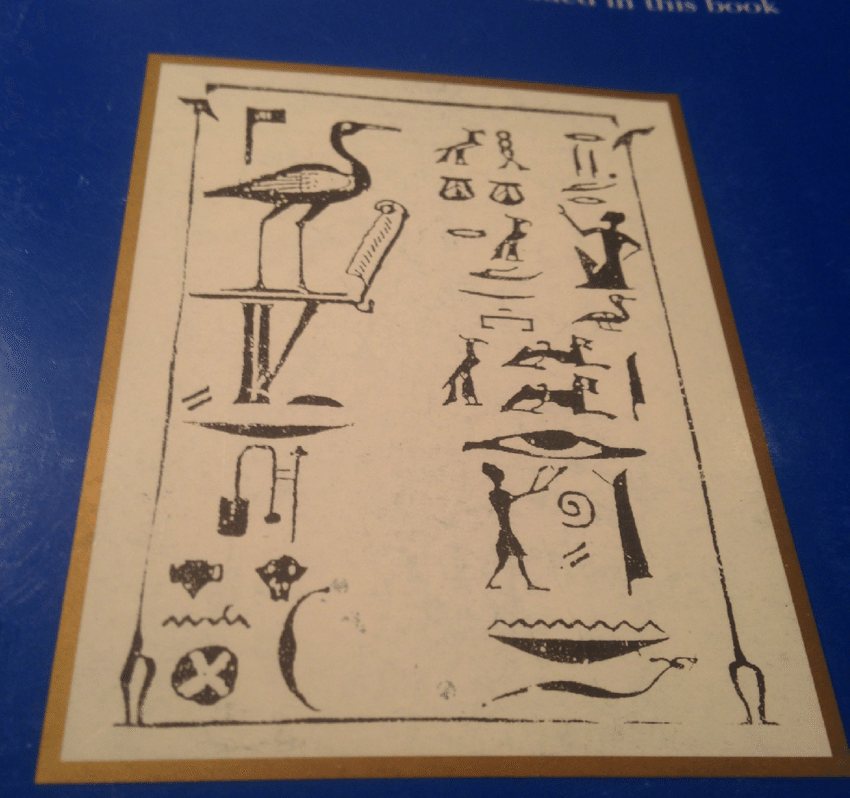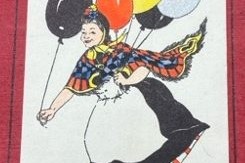Between the period of 22 June and 17 November 1888, Sir H.R. Haggard's serialised novel Colonel Quaritch V.C.: A Tale of Country Life was published in the Bolton Weekly Journal.

He was also offered to publish short stories in the paper, but due to time-related issues, he rejected this.
It was this letter, politely declining the Bolton Weekly Journal’s request, that I had read and which introduced me to Haggard. Not only this, but it introduced me to his love for Egyptology. In the top left hand corner was an unassuming stamp of ink, not much bigger than the pad of my thumb, and yet it revealed so much about him in such a brief glance. Most other authors did the same thing – Wilkie Collins has an impressive ‘W’ stamp on his – but what struck me with Haggard’s was that his was clearly Egyptian hieroglyphics.
A fascination in Egyptology was not uncommon in Victorian England. It seems, at least in part, that a lot of this fascination was a result of the rise in the theory of evolution and a search for Biblical narratives in Egypt. This and British colonialism paved the way for access to Ancient Egypt and with it a fascination. This brings us to Haggard:
“From a boy ancient Egypt had fascinated me, and I had read everything concerning it on which I could lay hands” (Haggard, 1926, p. 234).
Like many others, Haggard was obsessed with Egypt and this followed him into his work. This is most notable in works such as Cleopatra (1889), but is also seen in his other works where far-away countries, particularly Egypt, are a part of his characters’ backstories.
This includes Colonel Quaritch. By the end of the first page, the Colonel reminisces:
“And then it was, as he leant over the gate, that the image of a woman’s face rose before his mind as it had continually risen during the last five years. Five years had gone since he saw it, and those five years he spent in India and Egypt, that is with the exception of six months which he passed in hospital—the upshot of an Arab spear thrust in the thigh” (1888, p.3).
Haggard’s passion was not left unnoticed as his depictions of Ancient Egypt influenced his own contemporaries including French dramatist Vicroien Sardou who took inspiration from Haggard’s depictions, including reusing Haggard’s own characters in his drama which later led to the 1912 Helen Garner film.
It’s a wonder, then, that his impact on the Victorian depictions of Egypt are not more recognised. His popularity certainly made an impact on how this part of the world (and indeed its historical characters) were viewed at the time by his contemporaries.
Read H. Rider Haggard's Colonel Quaritch V.C.: A Tale of Country Life, below.
Bibliography
Basset, Troy J. (2025) “Title: Colonel Quaritch V.C..” At the Circulating Library: A Database of Victorian Fiction, 1837—1901 [Online] Available from: http://mail.victorianresearch.org/atcl/show_title.php?tid=1376&aid=486. [Accessed 17 March 2025.]
Britannica. (n.d.a) Sir H. Rider Haggard. [Online] Available from: https://www.britannica.com/biography/H-Rider-Haggard [Accessed 16 March 2025]
Daughtery, Gregory N. (2022). The Reception of Cleopatra in the Age of Mass Media. [Online] London: Bloomsbury Publishing. Available from: https://books.google.co.uk/books?id=ef99EAAAQBAJ&lpg=PP1&ots=bMvC-Wmt-O&dq=cleopatra%20haggard%20novel&lr&pg=PP1#v=onepage&q=cleopatra%20haggard%20novel&f=false [Accessed 20 March 2025]
Haggard, H.R. (1889) Cleopatra. [Online] London: Longmans, Green & Co., Available from: https://archive.org/details/dli.bengal.10689.1421/page/n7/mode/2up [Accessed 24 March 2025]
Haggard, H.R. (1888) Colonel Quaritch, V.C: A Tale of Country Life. [Online] London: Longmans, Green & Co. Available from: https://www.gutenberg.org/files/11882/11882-h/11882-h.htm [Accessed 17 March 2025]
Haggard, H.R. (1926) The Days of My Life: An Autobiography. London: Longmans, Green & Co., Available from: https://archive.org/details/in.ernet.dli.2015.101712/page/n287/mode/2up [Accessed 24 March 2025]
Halterhoff, K. (2017) Egyptology and Darwinian Evolution in Conan Doyle and H. Rider Haggard: The Scientific Imagination. Project Muse. [Online] 60(3), pp. 314-340 Available from: The Project Gutenberg eBook of Colonel Quaritch, V.C., by H. Rider Haggard [Accessed 16 March 2025]
Magus, S. (2017) The Hieroglyphic Letterhead and Bookplate of H. Rider Haggard. [Online image] Available from: https://www.researchgate.net/publication/322454000_A_Victorian_Gentleman_in_the_Pharaoh%27s_Court_Christian_Egyptosophy_and_Victorian_Egyptology_in_the_Romances_of_H_Rider_Haggard [Accessed 20 March 2025]












